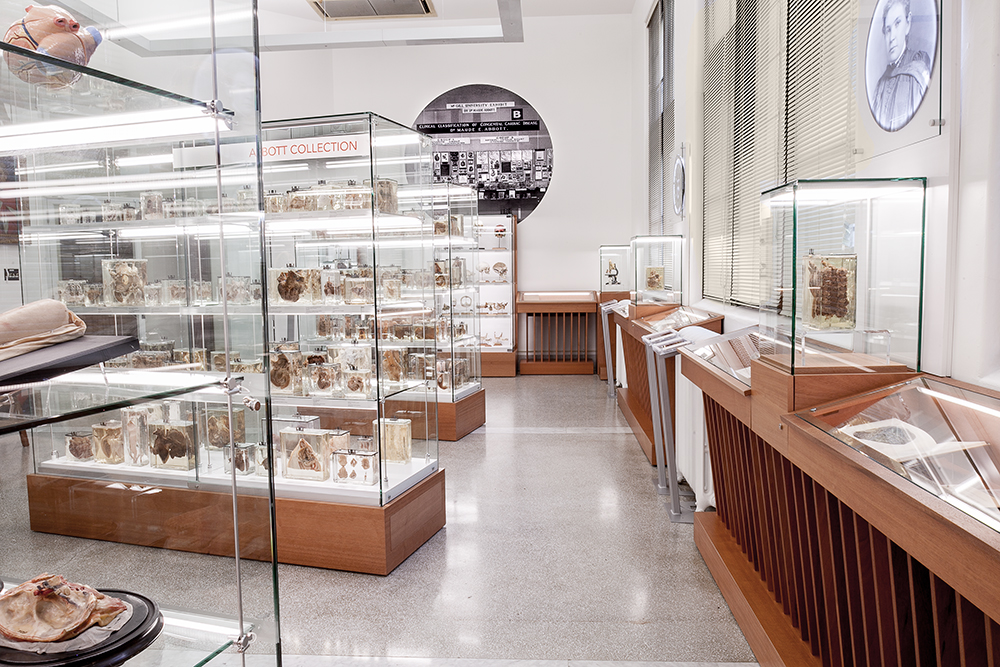Carefully preserved in a formalin-based fluid and mounted in glass is a three-chambered heart whose origins connect two important figures of McGill University’s past. The “Holmes heart” has a special place among the 2,000 specimens in the collection of McGill’s Maude Abbott Medical Museum, which opened its collection to the public this fall.
The heart dates to the 1820s when it was removed in an autopsy by Andrew Holmes, McGill’s first dean of medicine. Some years later, the organ also piqued the research interests of Maude Abbott, a pathologist and educator at McGill in the early 1900s, who would become a pioneer in the study of congenital heart disease.
Dr. Abbott, the namesake of McGill’s newly renovated museum, was appointed curator of the collection of medical specimens nearly 120 years ago. Under her guardianship, the museum and its artifacts became integral to McGill’s medical curriculum. Today, says current curator Richard Fraser, a professor in the pathology department, the medical museum educates in a different manner. “We do use the materials actively in teaching medical students, for example embryology,” he says, “but we also use them in other ways, which includes teaching on the history of medicine.”
Story continues below slideshow:
The specimens in the museum’s collection have been variously used in the study of medicine since the 19th century. They’re now on display to students and the general public alike. With the sheer size of the collection, however, Dr. Fraser estimates that less than 10 percent of it is on view in the museum’s refurbished space on campus.
When members of the public visit the museum, Dr. Fraser is sure to point out materials that show the pathology of a heart attack or stroke. “These [conditions] are common enough that most people will have at least heard about them, and many of them will have a relative or friend to whom the disease has happened to them, so it has more meaning,” he says.
The collection also allows students to think about medicine, and patients, in a more humanistic way. An exhibit, “Immortalizing the Mortal,” that has been organized for the past three years by the McGill Medical Students’ Society Humanities and Arts in Medicine with Dr. Fraser, features artwork and poetry created by students in response to a chosen artifact from the museum.
“It’s really about seeing that pathological specimen beyond its medicine and to look at the whole person,” says third-year McGill medical student Leila Farahdel, who has been involved in the exhibit since its first year. “We don’t know who that person was, what the pathology meant to them, how they felt dying,” she says. “Sometimes we get overwhelmed with the pathology and we forget who the patient is.”







